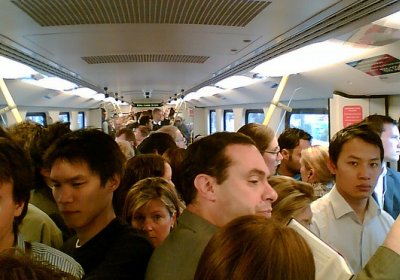Prime Minister Julia Gillard’s catch phrase for this election is "sustainable". No longer, according to Gillard, should we look to a big Australia, but a "sustainable" population.
In a speech in western Sydney on July 21, Gillard emphasised the squeeze on health services, transport, roads and infrastructure. She hinted her "sustainable population" mantra would ease the squeeze.
Apart from rhetoric largely designed to pander to irrational fears of immigrants and prejudices against asylum seekers, Labor has failed to explain what it means by "sustainable".
Graham Matthews
The Parramatta Climate Action Network (ParraCAN) staged a series of rolling protests outside New South Wales state government ministers offices calling for no new coal
The NSW state government is planning to construct two new coal-fired power stations, which will increase the state’s greenhouse gas emissions by up to 15%.
ParraCAN is circulating a petition calling for the prohibition of the construction of new coal-fired power stations; the development of a phase-out plan for coal; and that the state government support job creation in renewable industries.
Mortgage rates, we are told, are at historical lows. And yet, according to The experience of Mortgage Distress in Western Sydney report released in June by the University of Western Sydney, some mortgage holders are finding it so hard to pay, they are reduced to eating nothing but rice.
The study sought to investigate the impact of mortgage distress as experienced by individual households. The accepted definition of mortgage stress centres on the borrower being in payment arrears of 90 days or more. The UWS study argues that this definition is not broad enough.
In one of her first policy changes after replacing Kevin Rudd as leader of the Labor Party, Prime Minister Julia Gillard dumped Rudd’s idea of a “big Australia”.
On June 26, Gillard said “Australia should not hurtle down the track towards a big population”. Instead, she called for a “sustainable population”.
Almost four weeks on, however, Labor’s policy has no details — just lots of rhetoric designed to pander to fears that immigration (particularly asylum seekers) is causing a raft of social problems.
In her speech to the National Press Club on July 15, Prime Minister Julia Gillard threw down the gauntlet to the labour movement. In a speech outlining the plans for a second-term Labor government, Gillard promised to run a regime of “reforms” that would entrench greater competition and privatisation.
There should remain little doubt about Gillard’s intentions. Her speech was aimed directly at the wallets of big business.
The New South Wales government welcomed figures released by the state transport department on June 28 showing a slight increase in the proportion of trips taken by public transport in NSW over the 2008/09 year. “In 2008/09 travel by train increased by 3.1 per cent and travel by bus grew by 2.4 per cent whilst car trips fell by 0.8 per cent”, the government website said.
Labor Treasurer Wayne Swan’s third budget, delivered on May 11, continued the neoliberal austerity agenda of the previous Howard government. Delivered in the shadow of the Henry tax review, released by the government on May 2, Labor’s budget continues to grind away at social and environmental spending in the name of fiscal conservatism.
According to the Reserve Bank of Australia, the future of the Australian economy is so bright we should all start wearing shades. Justifying the RBA’s decision to lift official interest rates a further 0.25% on March 2, governor Glenn Stevens said, “the risk of serious economic contraction in Australia [has] passed”.
Responding to pressure from media, the community and the federal ALP, NSW Labor Premier Kristina Keneally dropped the state’s unpopular “Metro to nowhere” (planned to run from Barangaroo to Rozelle) on February 21.
The Sydney Morning Herald-sponsored “Independent Public Inquiry” into Sydney’s public transport released its preliminary report on February 13. The report outlined a 30-year strategy to massively improve Sydney’s public transport infrastructure.
New figures from the Australian Bureau of Statistics said unemployment had fallen in January by 22,300 to 612,000 — a drop of 0.2% to 5.3%. The ABS, which released its unemployment figures on February 11, estimated that 52,700 jobs were created in January.
Increased interest rates, declining working hours and stagnating wages are still chipping away at working people’s living standards, despite small falls in the official unemployment rate in November and December.
- Previous page
- Page 5
- Next page






